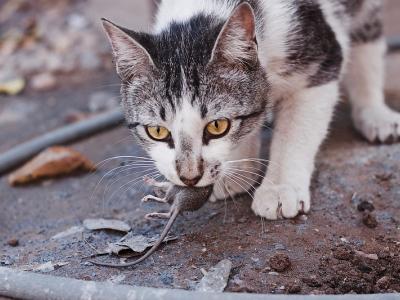Jun 21, 2006 (CIDRAP News) – Further tests have revealed no sign of H5N1 or any other avian influenza virus in samples from a Prince Edward Island poultry flock where an H5 virus was detected last week, the Canadian Food Inspection Agency (CFIA) announced late yesterday.
Samples from the flock tested negative at Canada's avian flu reference laboratory in Winnipeg, Man. "All birds tested negative on serological and virological tests," the CFIA said.
The CFIA announced Jun 16 that a gosling, one of four dead birds in a backyard flock of about 40, had tested positive for an H5 virus at a laboratory in Charlottetown, Prince Edward Island. The finding prompted authorities to destroy the rest of the flock and raised concern about the threat of the deadly H5N1 virus that has killed poultry in much of Asia.
"The fact that the H5 virus was not detected in testing at the Winnipeg lab, along with the absence of clinical signs of disease in the birds depopulated in the flock, indicates that only a very small amount of low pathogenicity virus may have been present in the index bird," the CFIA said yesterday.
The agency added that "incidental contamination" in the index bird would not be surprising because the bird spent time outdoors and other birds on the farm were known to have mingled with migratory birds, which often carry avian flu viruses.
However, the CFIA didn't suggest what might have caused the bird's death, if it was something other than avian flu.
The Winnipeg lab will try to grow virus from samples from the index bird, a process that will take up to 2 weeks, the CFIA said. "Ultimately it may not be possible to gain further information about the virus. This situation is not unusual as was evidenced in the 2005 survey of AI in wild birds."
In a Canadian Broadcasting Corp. (CBC) News report today, Dr. Jim Clark, manager of the CFIA's avian influenza working group, offered a possible explanation for the failure to find any avian flu virus in the index bird.
He said the initial positive test was a PCR (polymerase chain reaction) test, which detects viral nucleic acid. He suggested that the virus or the nucleic acid in the sample might have deteriorated during shipment to the Winnipeg lab to the point where it was no longer detectable, according to the story.
The CFIA said a quarantine on the affected farm would be maintained until tests are completed.
Birds from an adjoining farm were tested as a precaution, and all the results were negative, the CFIA said. That farm had been quarantined but has now been released, officials said.
Clark said any virus at the affected farm is unlikely to be a threat, according to the CBC story. "Whatever virus is there, we're reasonably certain it is so low in pathogenicity there's difficulty maintaining it and reproducing it," he said.
H5 and H7 viruses in poultry can be either mild or deadly. Because mild strains can evolve into lethal ones, outbreaks of low-pathogenic strains often lead to culling of poultry. In November 2005, about 58,000 poultry were destroyed near Chilliwack, British Columbia, to stop an outbreak of a low-pathogenic H5 virus.
See also:
Jun 20 CFIA news release
http://www.inspection.gc.ca/english/corpaffr/newcom/2006/20060620e.shtml
















